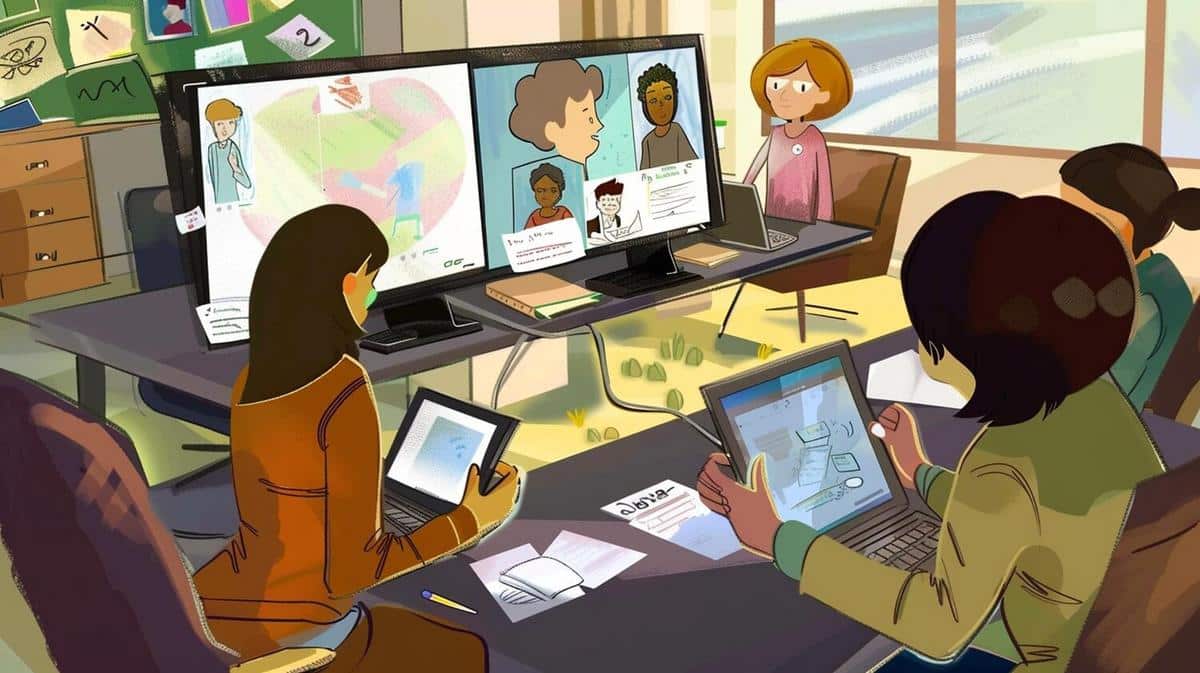
Building Community in Online Classrooms: Challenges and Strategies
Navigating the digital age has transformed education, leading to a surge in online classrooms. However, building a cohesive community within these virtual spaces presents unique challenges.
Understanding the Challenges of Online Classroom Communities
While online learning offers flexibility, it often lacks the interpersonal connections found in traditional classrooms. Dr. Carol Dweck, a renowned psychologist, emphasizes the importance of fostering a growth mindset to overcome these barriers, suggesting that students who feel connected are more likely to engage actively.
According to a study by the Journal of Online Learning and Teaching, students who feel part of a community are 40% more likely to complete their courses. This statistic underscores the necessity of community-building in online education.
Common Challenges
- Isolation: Students may feel disconnected from peers and instructors.
- Lack of Engagement: Without face-to-face interactions, sustaining interest can be difficult.
- Communication Barriers: Misunderstandings can arise without non-verbal cues.
Strategies for Building Community
Creating a sense of community requires intentional strategies. Here are some effective methods:
Foster Open Communication
Encourage regular discussions through forums and group chats. This not only enhances communication but also allows students to express their thoughts freely.
Utilize Collaborative Tools
Tools like shared documents and project management software can facilitate collaboration. These platforms enable students to work together seamlessly, even from a distance.
Host Virtual Social Events
Organizing online meetups or study groups can help students forge connections and reduce feelings of isolation. These events mimic the social interactions of physical classrooms.
Table of Strategies and Benefits
| Strategy | Benefit |
|---|---|
| Open Communication | Enhances understanding and engagement |
| Collaborative Tools | Facilitates teamwork and project completion |
| Virtual Social Events | Reduces isolation and builds relationships |
| Regular Feedback | Improves learning outcomes and motivation |
| Peer Mentoring | Increases support and knowledge sharing |
| Interactive Content | Boosts engagement and interest |
| Gamification | Makes learning fun and competitive |
| Diverse Content | Caters to different learning styles |
Conclusion
Building community in online classrooms is not only feasible but essential for effective learning. By implementing these strategies, educators can create a supportive and engaging environment that mirrors traditional classrooms, even in a virtual setting. Explore these methods and see how they can transform your online teaching experience.
Frequently Asked Questions
How can I encourage students to participate more online?
Use engaging content and interactive platforms to stimulate discussion and interest.
What are some tools to help build community in online classrooms?
Platforms like Slack, Zoom, and Google Workspace offer excellent options for collaboration and communication.
How often should virtual social events be held?
Frequency depends on the course duration, but monthly events can maintain engagement without overwhelming students.


